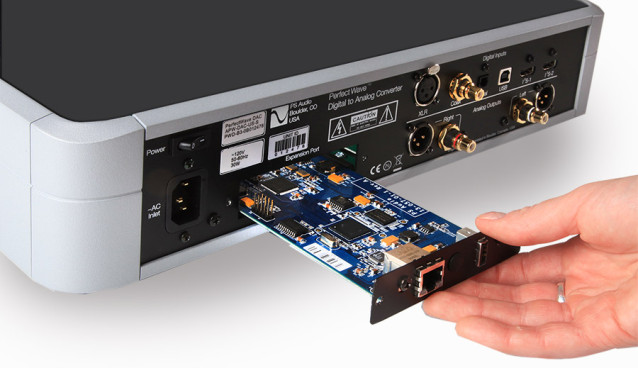PS Audio Proves Sound Quality is Metaphysics

No review disputes that the PS Audio DirectStream DAC (DSD) is musical bliss. Some reviewers have called it the component of the year for 2014.
Where reviewers get edgy on PS Audio is not about the fact that it so amazing but about the science of why it is so amazing.
What goes on beneath the metal casing of the DSD hits directly to the heart of all three of the top most passionate audiophile debates—expensive power cords/connecting cables; high resolution audio (HRA); and tweaks aka/”snake oil.”
Whether digital music files are read from a CD or from a computer hard drive, all digital music files are 1’s and 0’s. It is impossible for the same digital file to contain more information or less information. There is a 1 and a 0 and that is all.
The PS Audio DSD defies all logic and conventional wisdom to produce a sound that even someone who is sound challenged can identify as superior. Play the same digital file through an OPPO 105 (an indisputably great transport which includes a state of the art DAC chip) and through the DSD and anyone can hear the difference. The same file through the DSD seems to reveal more detail.
In my search for a DAC, I listened to the new Bryston BDA-2 DAC and the Benchmark DAC2 HGC. Both DACs are great, but I couldn’t say that either of them was better than the PS Audio PerfectWave DAC (PWD) that I owned. Until I heard the Chord DAC’s I didn’t think it was possible to get better.
After I heard it, I bought a Chord Hugo for portable use and I thought it was the best DAC I had ever used in or out of my home system. I’ll be writing about the Hugo in a future column. It is truly spectacular and it has become my favorite headphone DAC/amplifier for desktop and portable use.
My home audio system relied on the PS Audio PerfectWave DAC (PWD). If I hadn’t bought the Hugo I would never have even considered changing it. But for a PS Audio junkie, the Hugo shook my faith.
The PWD is a great DAC, but the bridge has always been a problem. The bridge plays digital music files from my home network through the DAC. After every 10 or 15 hours of use I have to reach to the back of the DAC to restart it and reset the connection to my network. It’s a known bug for some bridge owners and PS Audio promises a fix.
Since the fix was taking so long and since the Chord Hugo is so good, I was ready to switch away from PS Audio. Then, as if they read my mind, PS Audio offered a special sale. So I auditioned the DSD and it was truly amazing.
I called PS Audio immediately to arrange for the factory install of the DSD upgrade to my existing PWP. You can do it yourself, but I’m not capable of it. Within a week it was done. The only difference between the upgrade and a brand new unit is a broader remote sensor, the “DirectStream DAC” name tag on the face of the unit and about $3,000. Saving $3,000 is always a good thing.
The DSD is a game changer for 16 bit music, but not so much for 24 bit high resolution audio. In A-B blind test comparisons between CD’s and high resolution audio downloads of the same music, I tend to choose the 16 bit CD over the 24 bit high resolution audio. It is not just about the detail in the CD, there seems to be more dynamic range and the sound is just more “musical,” less “fatiguing” when I listen through the DSD.
When I do the same A-B blind test through the OPPO 105, the 24 bit high resolution audio files win out consistently even with my best Mobile Fidelity Sound Lab CD’s. The only exception so far where the Mobile Fidelity Sound Lab CD is better than the high resolution audio file is on John Lennon’s “Imagine.” But that’s not a new discovery for me. This blog has a review of the John Lennon re-master.
It is no wonder why the scientifically oriented audiophiles are scratching their heads and skeptically questioning those who say they hear more detail in a CD played through a DSD. It is impossible to satisfactorily explain it. Impossible though it may be, the proof is in the listening. The answer may be just beyond science
